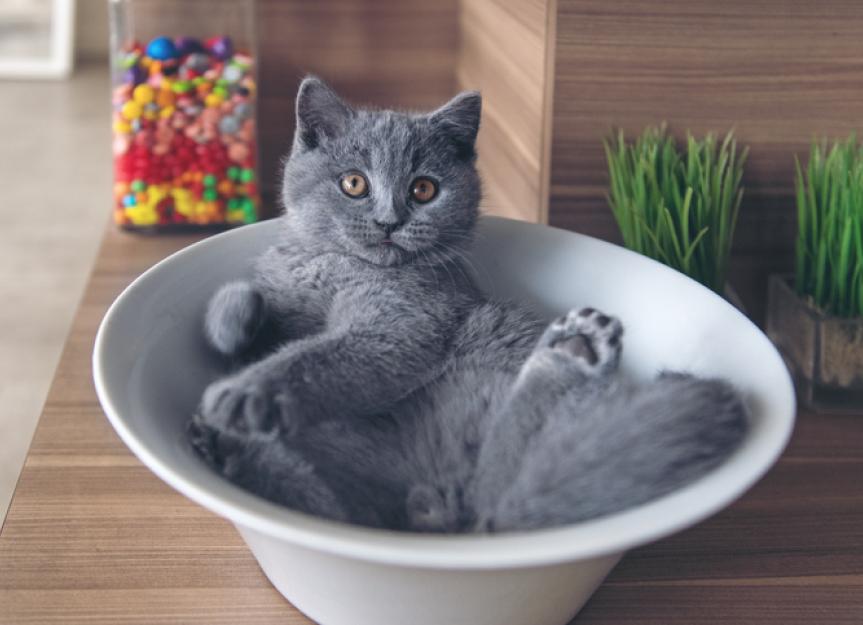Are Cats Both a Liquid and a Solid?
Some of my favorite viral images involve cats squeezing into small spaces and adapting to the shape of their containers. By definition, a material that adapts its shape to fill a container is a liquid. But, when removed from a container, a cat will hold a specific shape, making him or her a solid. This begs the question, arecats both a liquid and a solid?
In 2017, French physicist Marc-Antoine Fardin won anIg Nobel Prizefor assessing whether cats can simultaneously act as a liquid and a solid. Ig Nobel prizes “honor achievements that first make people laugh, and then make them think.” Asking whether cats are a liquid certainly fits in that category.
Cats, and especially kittens, are very flexible and can mold into almost any shape. They use their flexibility to reach nearly every part of their body to groom. That flexibility can also get them into trouble if they get stuck in a small space or if the container is made of a material that can break if they knock it over.
Cats are naturally drawn to small spaces, likeboxes. According to the field of rheology, the study of the flow of matter, cats behave differently based on the size of the box or container. If the container is small, cats can adapt to the shape quickly. If the container is large, cats still enjoy the space but retain their solid state.
Cats are able to mold to the shape of their container due to their incredible innateflexibility. They can squeeze into and through impossibly small spaces because of their anatomy. Cats’ collar bones do not form joints with other bones, and their shoulders are attached only through muscular connections. Their super-elastic spine also contributes to cats’ liquid-like characteristics. Cats have more bones in their spines than humans, and each joint adds flexibility.
This flexibility helps cats both escape from predators and reach prey—an important evolutionary advantage. Just as their fondness for small spaces can be traced to the behavioral needs of wild cats, the flexibility that allows cats to mold into the shape of their container imparts useful advantages.
It’s easy to dismiss this kind of thought experiment as useless or a waste of time. But Fardin examined existing formulas and theorems and applied them to a new question. Familiarity with the complex foundations of a field of study allows researchers to consider questions that advance knowledge in their field. So, I would say to Fardin, keep seeing questions in daily life that inspire you—especially when they involve cats.
Dr. Hanie Elfenbein is a veterinarian and animal behaviorist located in Atlanta. Her mission is to provide pet parents with the information they need to have happy, and healthy, and fulfilled relationships with their dogs and cats.
Help us make PetMD better
Was this article helpful?
